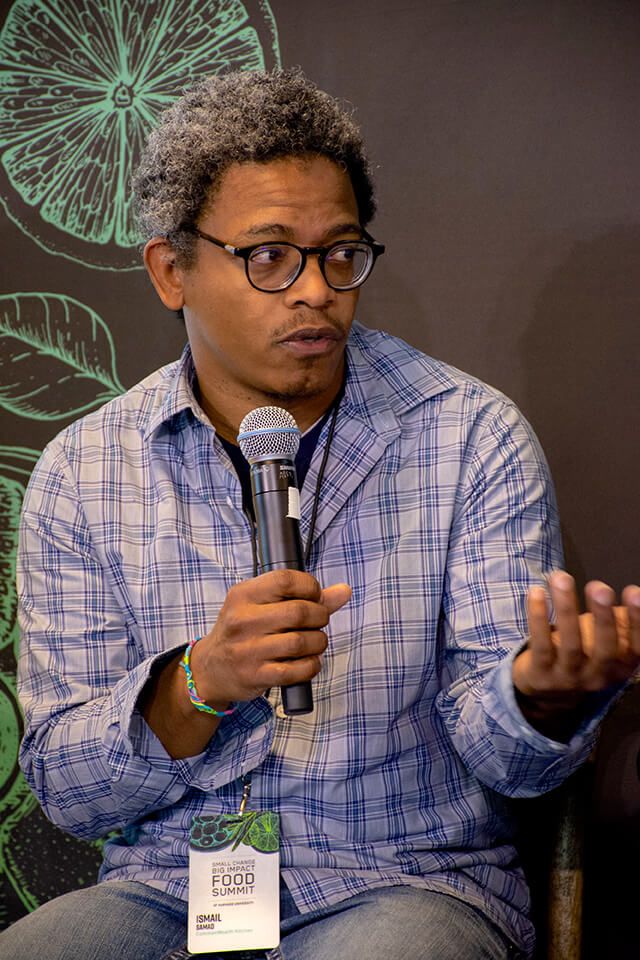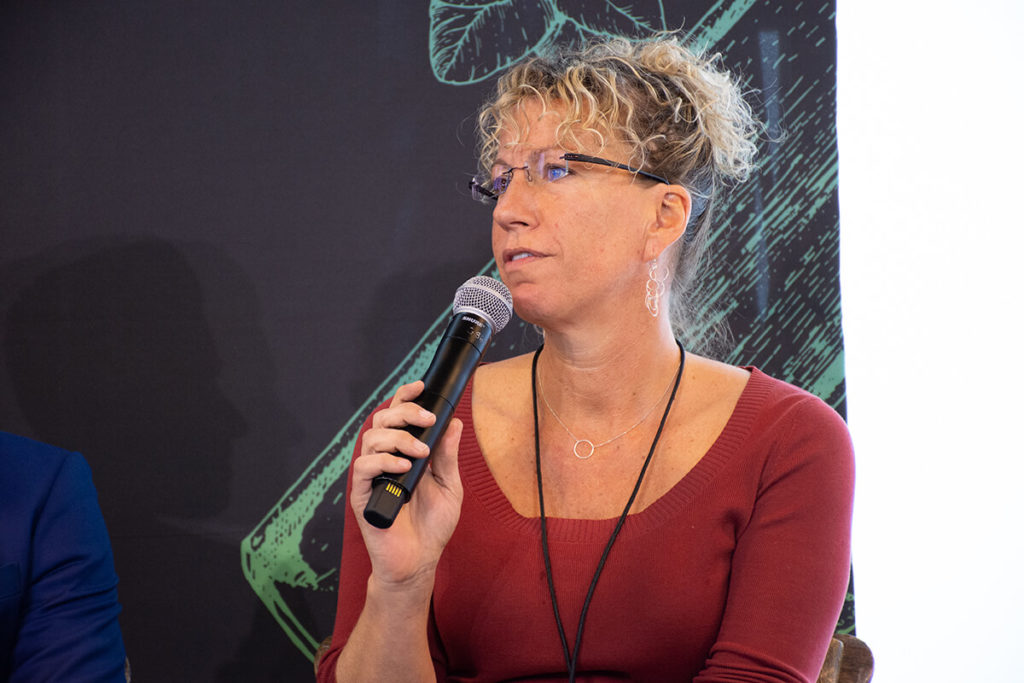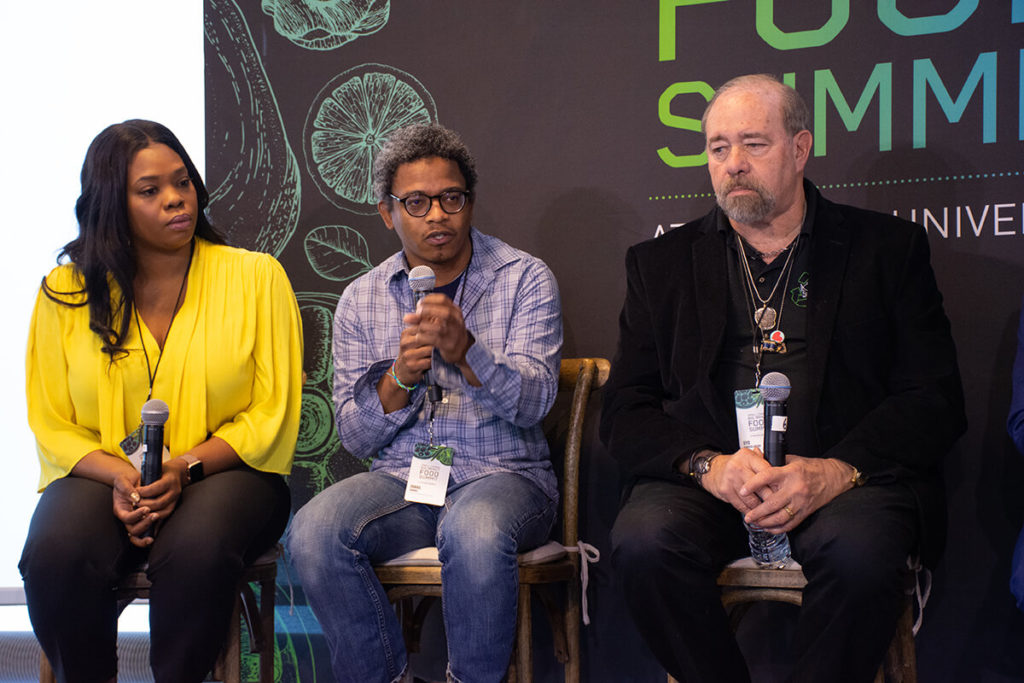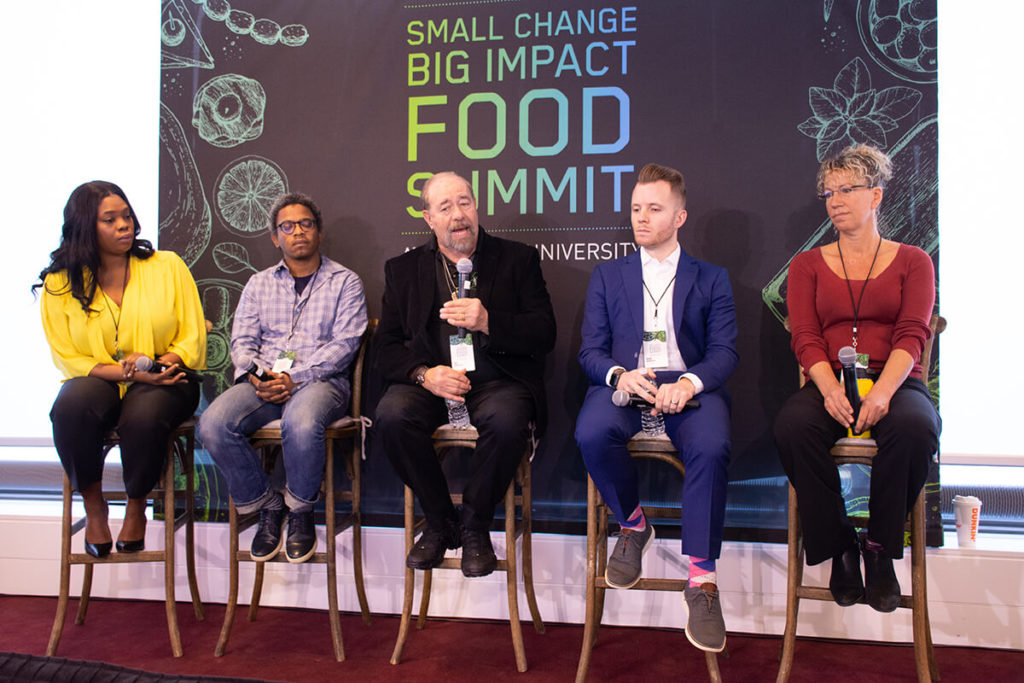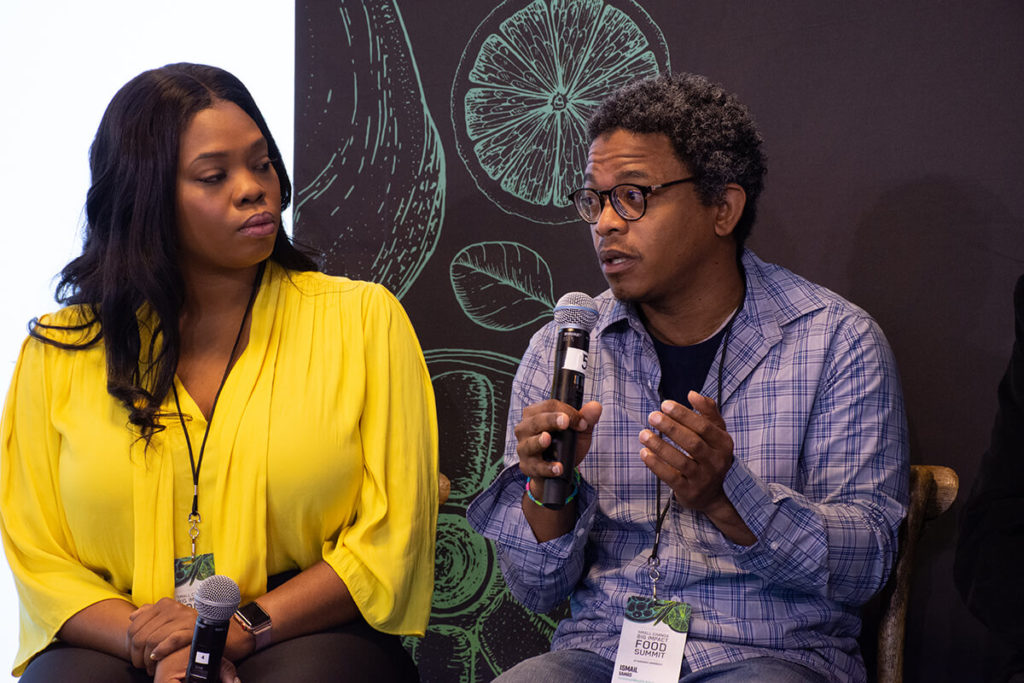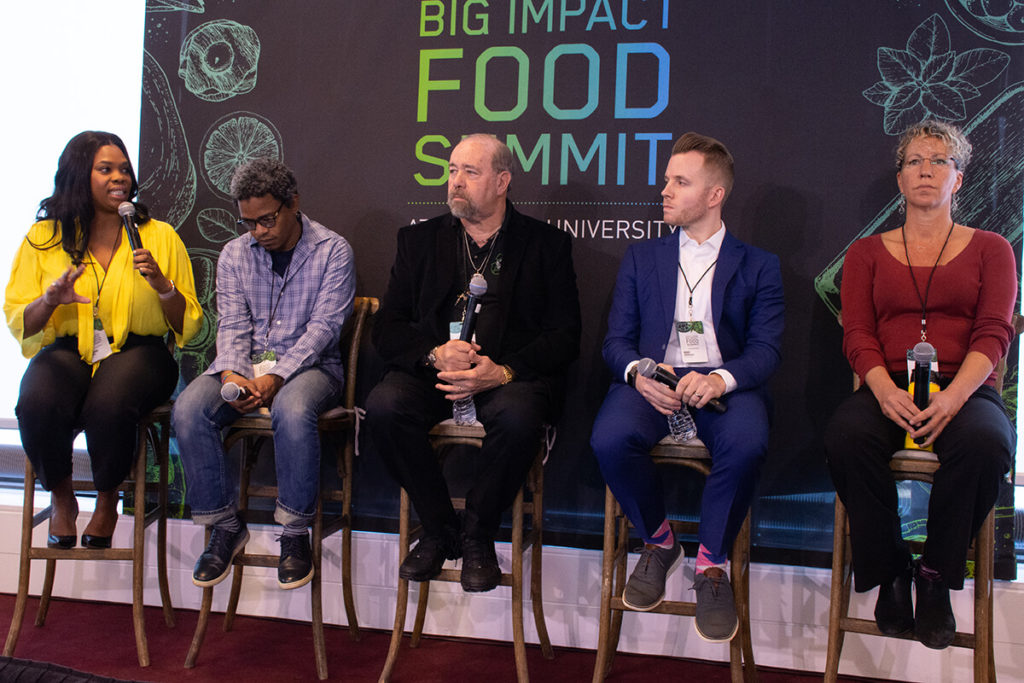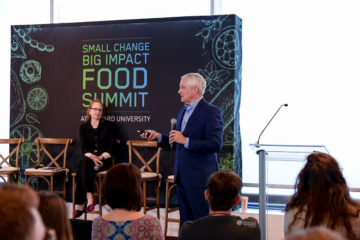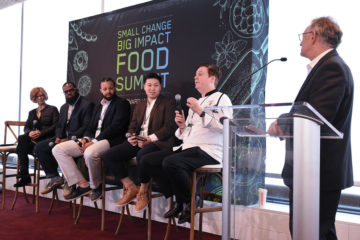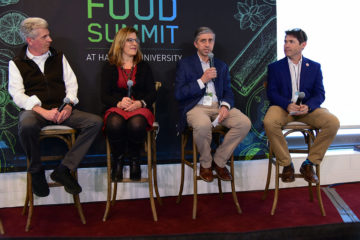Food Waste: Waste Not Want Not
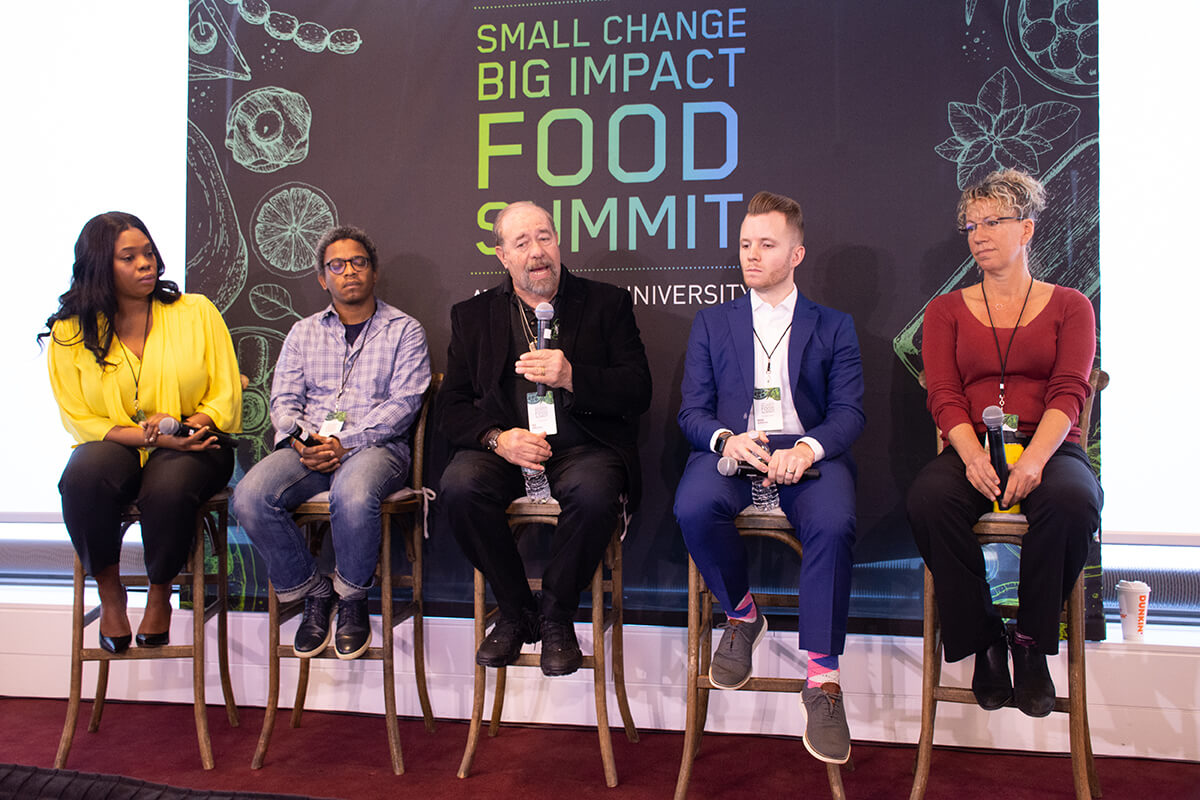
By some estimates, nearly half of the food grown, processed and transported in the U.S. goes to waste, despite the fact that America has more than enough food to feed everyone. How can we re-engineer food delivery, packaging and post-consumer processing to make sure fresh food gets distributed efficiently? What about “ugly” produce?

Crista Martin
Director of Strategic Initiatives and Communications, Harvard University Dining Services

Sasha Purpura
Executive Director, Food For Free

Ricky Ashenfelter
CEO, Spoiler Alert

Syd Mandelbaum
Founder & CEO, Rock and Wrap it Up!

Jasmine Crowe
CEO, Goodr

Ismail Samad
Director of Operations, CommonWealth Kitchen
Key Takeaways
Realistically, the panel could be titled “wasted food,” and these innovators are looking at packaging, ugly produce, supply chains and portion sizes as ways to rescue millions of pounds of food before it goes to waste.
Crista Martin:
“I think about wasted food and it’s happening at every step of the chain.”
Rickey Ashenfelter:
“When you think about it, the advent of grocery delivery and meal kits are helping cut down on consumer waste in the household because it’s pre-portioned and on demand but what it’s doing is shifting the burden higher up the supply chain.”
Jasmine Crowe:
“I’m surprised at how much food waste there is but also about the level of education that’s still required to turn a lot of people on to the fact that they can donate this food, that there are laws and incentives that are encouraging them to do so.”
“We have millions of people in this country who are still going hungry, it’s just surprising that to me in a country where we’re allowing people who we’ve never met before to pick us up and take us home, we are still so afraid to fight hunger.”
Syd Mandelbaum:
“The EPA has been very involved with the food recovery challenge nationally.”
Sasha Purpura:
“The Harvard Dining Services has a budget and its core drivers that have a value system that says, ‘This is part of our problem,’ and we’ve been able to implement this partnership [with Food for Free] at minimal, negligible cost to Harvard Dining Services and in fact to great benefit in terms of engaging students.”
Ismail Samad:
“We have to be strategic about what (food) products we can capture in the region. That is a surprise for us.” and also: “If the solution doesn’t make sense to all partners in the partner chain, it will not work .… where’s the value proposition to the farmer? We need further conversation on how to make it fair throughout the partner chain.”
